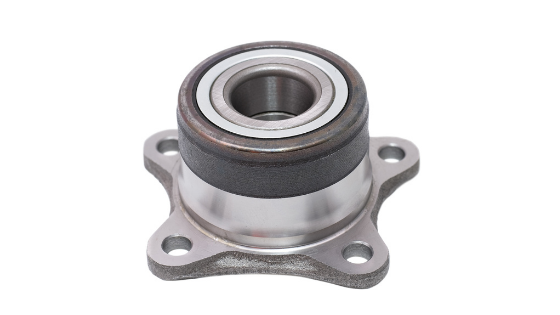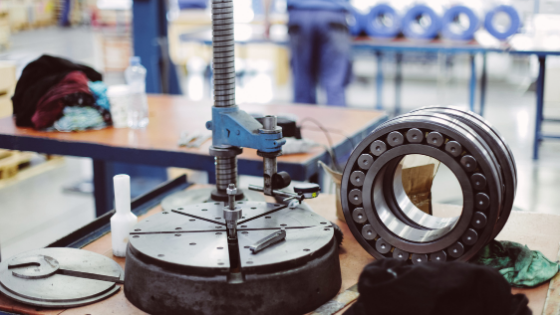Journal Bearings: Quite a fundamental block of modern machinery is the use of movement. Most often, rotating movement is leveraged to utilize raw power. These are furthered into useful work in every step of life. From a simple cycle to earth-moving machinery, rotation is the key.
For any rotating piece of equipment, there are two components. One being the rotating part whilst the other being the stationary part. To maximize efficiency, reduce wear and tear, and for tens of other advantages, the rotating part should be separated from its stationary counterpart.
Sounds simple?
The need for this separation gave rise to an integral part of modern machinery — bearings.
Today, we are going to delve into the world of Journal Bearings.
Introduction
Turbines? Wait!
Steam engine? No, wait.
Journal Bearings and its functioning date back to when the wheel was discovered. Ever since they have been a life-saver for many industries. It is a hydrodynamic bearing with high capacity and works with utmost efficiency. Any bearing manufacturing company shall consider journal bearings as their staple component. Its application is diverse and not easily replaceable.

Structure and working
Typically, journal bearings are cylindrical. With a cylindrical bore, it consists of a couple of axial grooves. These grooves are further used for the lubrication of the bearing. These bearings facilitate the movement and support the rotating shaft.

The functioning of a bearing is subtle, yet of profound importance. Under proper lubrication, when a journal bearing operates, there exists no contact between the rotating shaft and the stationary surface.
The oil or grease for lubrication is provided through one or more grooves or supply channels.
Materials used
The importance of material selection for bearings is underrated. Materials have the ability to facilitate tremendous growth when chosen correctly. On the flip side, incorrect choosing of materials may result in a catastrophe. It is always advisable to consult your bearing manufacturers for right guidance while selecting bearings.
From tree wood to iron, several materials have been tried and tested for the ideal functioning of journal bearing. For years now, high lead and high tin alloys have been the preferred materials. Carbon, graphite, ceramics, and even plastics are used in different bearings.

Nowadays, journal bearings with high lead alloys have been rendered useless. Due to environmental constraints and lower strength levels, lead alloys are almost eliminated.
The most common alloy used in the manufacture of journal bearings is known as babbitt. It is made of 89% tin, 7.5% antimony, and 3.5% copper.
This alloy is found to be the most suitable for the functioning of journal bearings. Furthermore, this alloy ranks high on the Brinell hardness test. With high tensile strength, babbitt alloys are the ideal companions for journal bearings.
Types of Journal Bearings
-
Partial arc bearing
Oftentimes, you find these in electric motors. This serves the purpose of reducing friction for unidirectional loads. With reduced ability to withstand vibration, these are not common.
-
Axial groove bearing
Add a couple of grooves to the most common circular bearing, and you get the axial groove bearing. The additional grooves facilitate better lubrication and oil distribution.
-
Elliptical bearing
One of the more common bearings in use, elliptical bearings can withstand heavy loads. It is more dynamic and is used for diverse applications, whilst also being more stable.
-
Multi-lobe bearing
The alteration of preload and offset for each pad of the bearing is leveraged in this. As per the need, the clearance, preload, and offset of the bearing can be selected. These are often found in machinery with heavy vertical loads.
-
Offset half bearing
This is a type of multi-lobe bearing but with only 2 pads and 100% offset. This is unidirectional in functioning as it does not tolerate reverse rotation. Both the pads are often preloaded making them effective.
-
Pressure dam bearing
Also known as pocket or step bearings, these are two-lobe bearings with an allowance for oil storage. It leverages the hydrodynamic pressure to increase the eccentricity and stabilize the machine.
-
Tilting pad bearing
Most of the turbomachinery found nowadays uses tilting pad bearings. The robust and rugged nature of the bearing assists its use in intense and heavy scenarios. The ability to optimize the rotor dynamics makes these bearings one of the best in the business.
Applications
With several types of journal bearings in use, it is only justified to be used in several scenarios. Here is a comprehensive list of facets where journal bearings are used:
- Hydroelectric Generators
- Hydraulic Turbines
- Steam Turbines
- Gas Turbines
- High Speed Blowers
- Centrifugal Compressors
- Electric Motors
- Deep Well Pumps
- Oil Pumps
- Cooling Pumps
- Pulp Refiners
- Turbochargers
- Air Preheaters
- Rock Crushers
- Extruders
- Main Propeller Journals
- Turbine-Generator Sets
- Clutch
- Pumps
- Blowers
- Auxiliary Machinery
Conclusion:
This is a comprehensive overview of journal bearings. Whilst its advantages catch one’s eye, its utility is entirely dependent on its quality. With the popularity of journal bearings growing, the number of bearing manufacturers increased too.
At this juncture, be cautious to purchase quality journal bearings. If you are looking for the best quality journal bearings crafted with precision, your search ends here.
Hi-bond is India’s leading bearing manufacturing company. At affordable rates, you receive the best bearings for your needs. With no compromise in quality, Hi-bond produces the finest bearings and bushings. You can contact them here.

